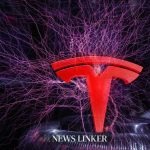Elon Musk recently alluded to a significant shift in Tesla‘s operational approach, reminiscent of his earlier “wartime CEO” periods. This announcement follows significant executive departures and precedes the expected launch of Tesla’s dedicated Robotaxi. Observers link Musk’s current maneuvers to his historical strategy during Tesla’s challenging times, such as the Model 3 ramp-up, which was pivotal in establishing Tesla’s market dominance but brought the company close to collapse. The return to such a confrontational management style suggests major upcoming initiatives meant to ensure the company’s aggressive growth and sustainability in the competitive electric vehicle market.
Tesla’s journey under Musk’s leadership has been marked by cycles of intense challenge and transformation, typically following substantial organizational reshuffles aimed at optimizing operations for growth phases. About every five years, Musk has streamlined Tesla to tackle new growth phases, with the most recent restructuring evidently aligning with the Robotaxi’s introduction. The departure of senior executives like Drew Baglino and Rohan Patel seems to underscore a broader strategic overhaul, potentially gearing Tesla for another high-risk, high-reward gamble akin to its early days of the Model 3 development.
Revisiting the “Wartime CEO” Approach
Tesla seems to be pivoting back to a high-stakes strategy under Musk’s direct leadership, focusing intensively on leading the market amid rising competition, especially from burgeoning electric vehicle markets in China. This shift is reflective of Musk’s self-described “wartime CEO” persona, where rapid decision-making, disregard for rigid protocols, and a focus on critical strategic goals are paramount. His active engagement on social media platforms, including supportive interactions with Tesla community influencers, reinforces his hands-on approach during crucial periods.
Upcoming Robotaxi and Its Market Implications
The imminent launch of Tesla’s Robotaxi service represents a critical juncture for the company, mirroring past strategic bets like the Model 3 initiative. This project could substantially influence Tesla’s market standing and financial health, marking it as possibly the next significant innovation in autonomous transportation. The Robotaxi rollout not only reflects Musk’s aggressive innovation strategy but also his commitment to maintaining Tesla’s market lead in electric vehicle technology and autonomous driving solutions.
Industry Reactions and Comparative Strategies
In response to Tesla’s strategic shifts, industry experts and competitors are closely watching Musk’s moves. Articles such as those from Engadget titled “Tesla’s Strategic Decisions: A Risk-Reward Analysis” and from AutoExpress titled “Global EV Market Responds to Tesla’s Innovation Push” discuss the broader implications of Tesla’s strategies on the global electric vehicle industry. These analyses suggest that Tesla’s success or failure with the Robotaxi could send ripples across the industry, influencing market dynamics and competitive strategies.
Helpful Points
- Tesla is gearing up for major strategic shifts, possibly involving high risks.
- Elon Musk’s “wartime CEO” approach could be crucial for Tesla’s next growth phase.
- The Robotaxi launch is pivotal and may significantly affect the EV market.
As Tesla prepares for what could be another defining moment in its history, Elon Musk’s renewed focus on intensive management and strategic risks highlights the continuous evolution of his leadership style in response to market demands. This approach could either significantly bolster Tesla’s market position or present new challenges, depending on the execution and reception of upcoming projects like the Robotaxi. Observing these developments offers valuable insights into strategic management and innovation-driven growth in technology-intensive industries.










